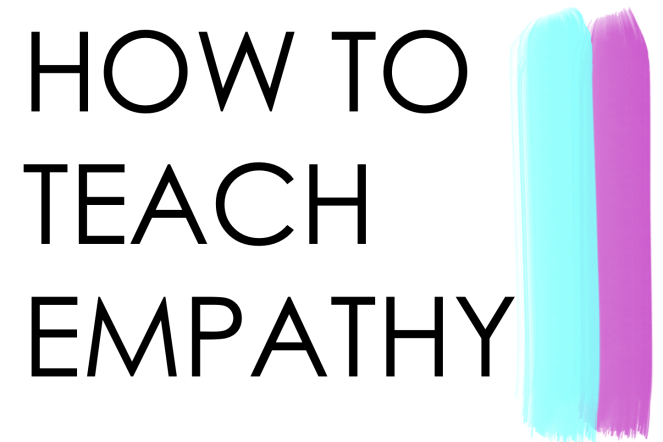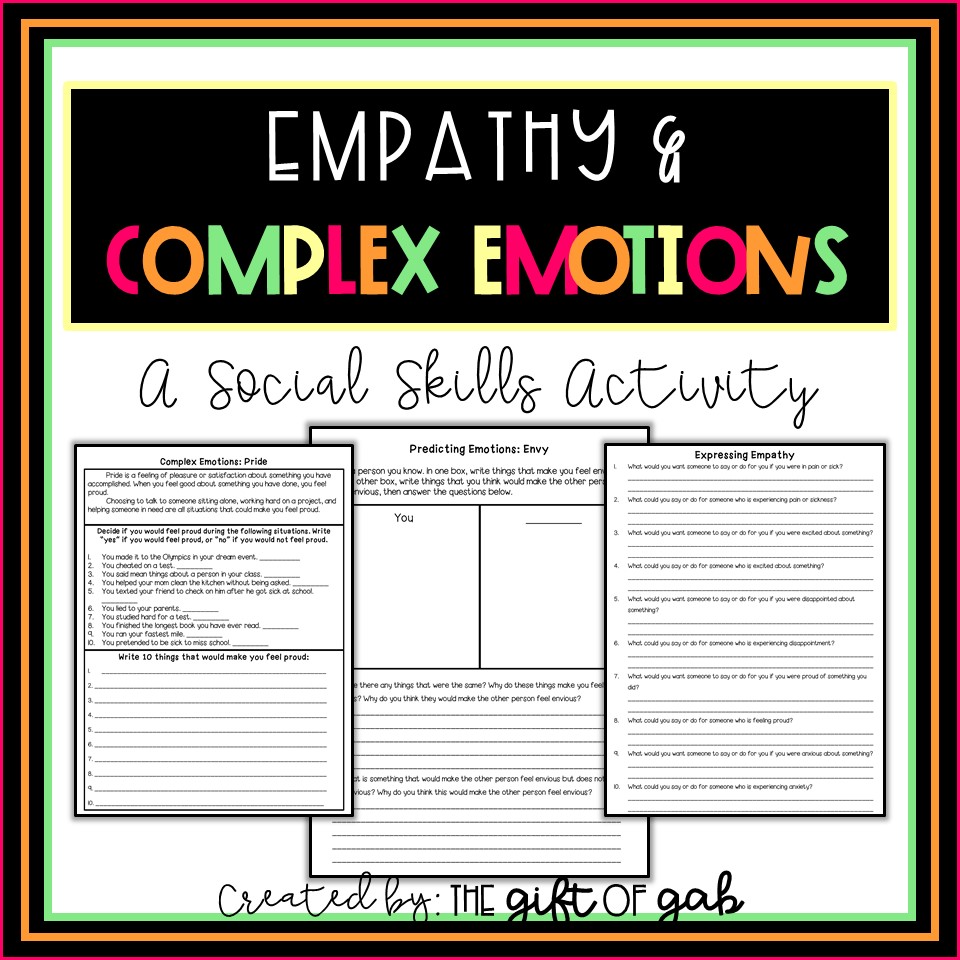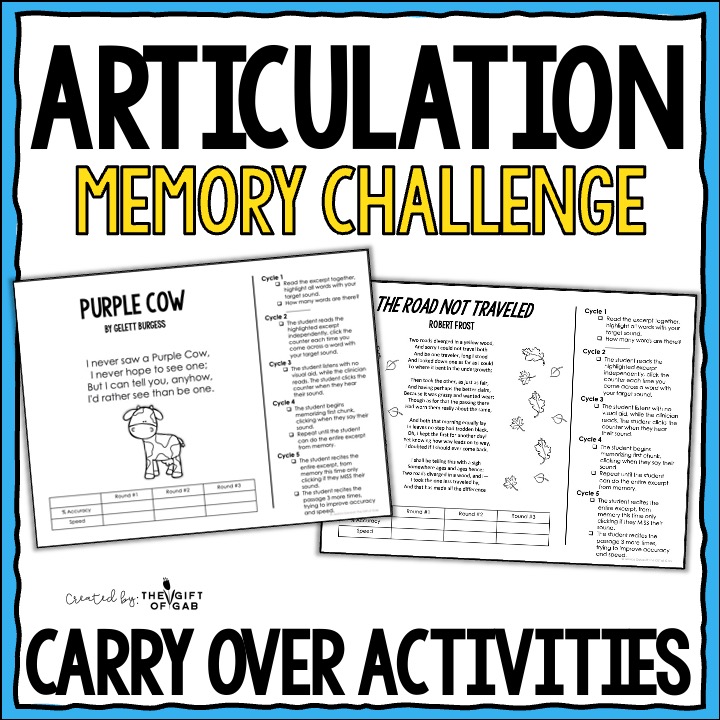
Where do you even start when you are trying to create activities for teaching empathy to the middle schoolers on your caseload? First, answer this question: how do you define empathy? I mean, really, take a second and try to put words to it. When I first sat down and tried to define empathy, the first thing I felt was an emotion. I know what empathy feels like, but a definition with words took a little more thought. After doing some research and reflection, this is the definition I settled on:
“Empathy is the ability to imagine a situation that another person is experiencing as if it is happening to you.”
Ok, so now we have a definition, but how do we help our students apply meaning to that definition? How do we help them to generate that feeling that we feel when think about empathy? How do we teach them WHY it is important to be empathetic in the first place?
These are the steps I use to answer those questions:
- Like we discussed in Part One, we first start by teaching about emotions, particularly the more complex emotions. However, since we already talked about emotions, let’s focus our thoughts on the next steps.
- I always enjoy trying to find an engaging activity to introduce a new skill. To introduce empathy, I might do this using a video. The Disney Pixar Shorts are a really good way to do this. There is not much distracting dialogue, so you can really take the time to emphasize the characters and how their body language gives you a clue as to how they might be feeling. If time allows, I would allow my students to watch the video through once in its entirety to absorb the message. Then, we would go back and pause the video to discuss each new emotion. If you have already been practicing emotions, hopefully your students will be doing well with this.
- If you have been working on emotions using my strategies, then you know that first we need to focus on teaching our students to identify their own emotions. After our students can identify their own emotions, we begin practicing taking someone else’s perspective and imagining how a situation might make the other person feel. This is the beginning of teaching someone to be empathetic.
- But we don’t just want our students to understand empathy, we want our students to actually express empathy! Expression of empathy is what develops friendships and inclusion in social situations. I teach this by giving my students a list of scenarios. An example scenario might be “What would you want someone to do or say for you if you were hurt or sick?” We could talk about how we like it when someone asks if we aren’t feeling well, or that we appreciate it when someone makes us a special food or gives us a hug when we are sad.
- Once we have talked about what we like others to do or say when we are experiencing a particular feeling or emotion, we make a plan regarding what we could say or do to express empathy when we observe someone else experiencing that feeling or emotion. I will give you a hint…it’s probably the same answer! If we go back to the feeling sick example, we would express empathy by asking someone “Are you feeling ok?” or by making special cookies to give to the person who isn’t feeling well.
- Drill and practice. Challenge your students to generate ways they could express empathy when they see others experiencing a feeling or emotion.
If you would like to learn more about teaching empathy and complex emotions, check out my resource Empathy and Emotions Activities. This resource contains activities that will help you teach complex emotions and empathy using the strategies outlined in this post.
I hope this post gave you some new activities for teaching empathy to the middle schoolers on your caseload! If you have any other tips or strategies, please leave them in the comments below so everyone can learn something new!

If you’re interested in upping your pragmatic language therapy/evaluation game then you have come to the right place. Let me share my tips and tricks with you so that you can approach this tricky area with confidence. Click here and we can start learning together–I even want to give you a free pragmatic language evaluation checklist so you can sample my work. If my style isn’t your cup of tea, you can unsubscribe at anytime 🙂




